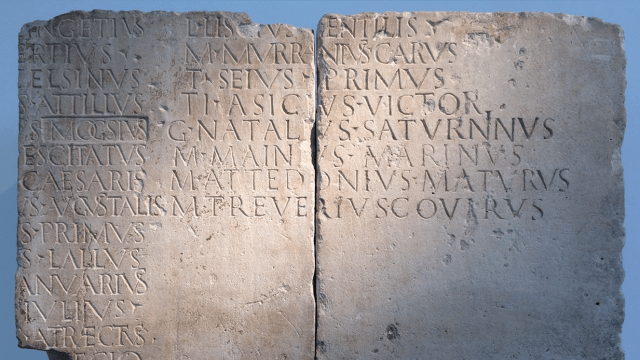
Ancient Roman inscription in the collection of Rheinisches Landesmuseum Trier, Germany; CIL XIII 3707 (Kleon3, CC BY-SA 4.0, via Wikimedia Commons).
Since the 1980s, archaeologists have used Summed Probability Analysis (SPA) of radiocarbon dates to reconstruct demographic trends. This ‘dates as data’ approach assumes that radiocarbon dates represent occupation events, and that large enough datasets of dates can be used as a proxy for population. Now that machine-readable epigraphic datasets are available, Inscriptions provide an underutilised source of ‘dates as data’. This seminar presents an SPA using the LIRE dataset, which contains over 180,000 Roman-era inscriptions. As an exploration of this approach, I perform a number of SPAs on subsets of the data to estimate population trends at the level of the (western) empire, province, and municipality, test the robustness of these estimates, and compare my results with independent estimates. I also explore extensions to the method afforded by inscriptions. As an archaeologist and historian, I am interested in feedback on this approach and the utility of results it produces.
All welcome. No registration required
Location
Speakers
- Professor Shawn Ross, Macquarie University
Contact
- Tatiana Bur